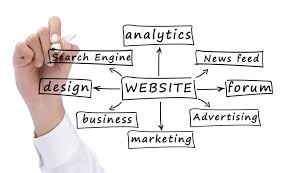 Everyone in business today has heard of the Internet and World Wide Web and most of us are wondering if we should get on the band wagon and have a website for our business. And, if so, just how do we go about it? This is the second article in our two-part series What Should Your Internet Strategy Be?, outlining the step-by-step process on what you should do.
Everyone in business today has heard of the Internet and World Wide Web and most of us are wondering if we should get on the band wagon and have a website for our business. And, if so, just how do we go about it? This is the second article in our two-part series What Should Your Internet Strategy Be?, outlining the step-by-step process on what you should do.
Step Four: Determine Ongoing Issues and Costs.
Web sites, like all shop fronts, need to be freshened up after a time. In fact, the more you can keep the site looking fresh, the more effective it will be. Early web sites required the ongoing skills of a web programmer to be updated and, as this was time-consuming and expensive, many of the early sites were static rather than dynamic. In fact many small businesses had sites that dated rather badly as the business could not afford to update the site.
As the internet has matured there are many more people around who are experienced programmers and the price of getting a programmer has come down. The second big breakthrough is that with so many sites in the world that need to be kept up to date, there is a big demand for content management tools that allows document and files created in common formats like Word and PowerPoint, to be simply uploaded to a web site. As a result, small businesses can do a lot of their own updating now. There are many content management systems coming onto the market, with prices ranging from a few thousand dollars to into the hundreds of thousands. Some of them are being offered for small recurring monthly license fees which is attractive. The big issue to remember when thinking about content management (and in fact all the technology decisions you make) is that you will become dependent on it, so checking out the credentials of the supplier is as equally important as the price and functionality as the product itself.
Step five: Measuring the effectiveness of your site
Another key area to consider it getting accurate information about how many hits your site gets (how many visitors). Ask any shop keeper and they will tell you how many people came into the shop, what they looked at, what they asked about, what was interesting and what was not. Your electric shop front is no different. You will need to know not only the traffic generated, but also what worked. This information is invaluable input into decisions you make about both about your site management and also your business itself.
It’s also important to use the valuable information that is generated from your Internet community. Consider if your site could automatically generate customized marketing offerings, newsletters, special information packs or any other individualized communications with your clients. This would for the basis of a customer relationship management system, which up till recently was only available to larger businesses with complex computer systems and a team of programmers. Once again, the Internet is bringing functionality to small businesses.
Getting a website, or updating the one you have, is not a trivial decision. However, the good news for small business owners is that it is much more affordable than it used to be. Now is a crucial time for small businesses to evaluate their Internet strategy. Your website needs to move from being an incidental part of your business to holding a more strategic, core position. Getting expert advice so that you get all the benefits from your investment is a sound first decision in the process.
Copyright 2003, RAN ONE Inc. All rights reserved. Reprinted with permission from www.ranone.com.

 Chris’ combination of academic credentials, career experience and temperament ideally suit his calling as a business development advisor. Clients say he has a mind for business and a heart for service.
Chris’ combination of academic credentials, career experience and temperament ideally suit his calling as a business development advisor. Clients say he has a mind for business and a heart for service.